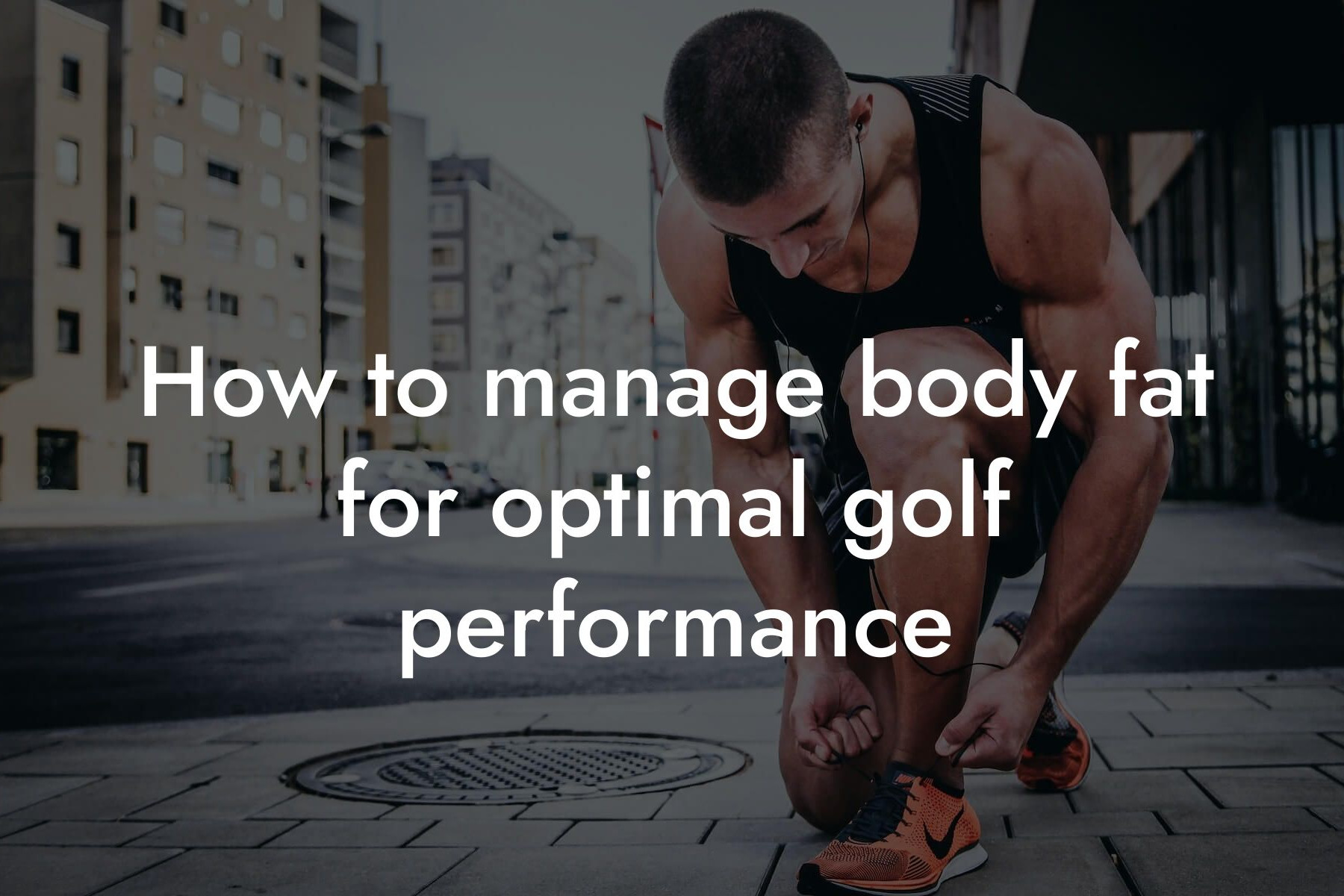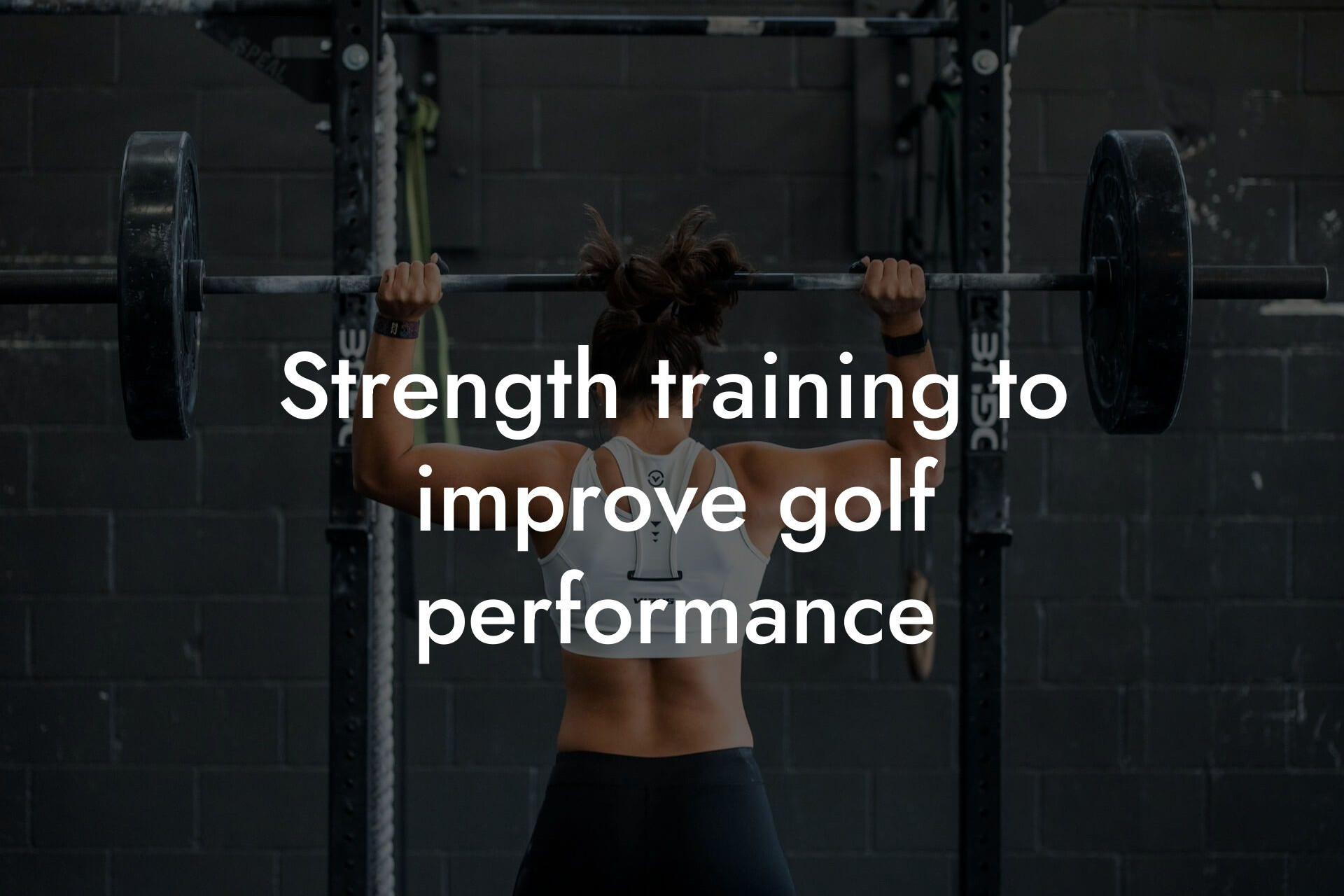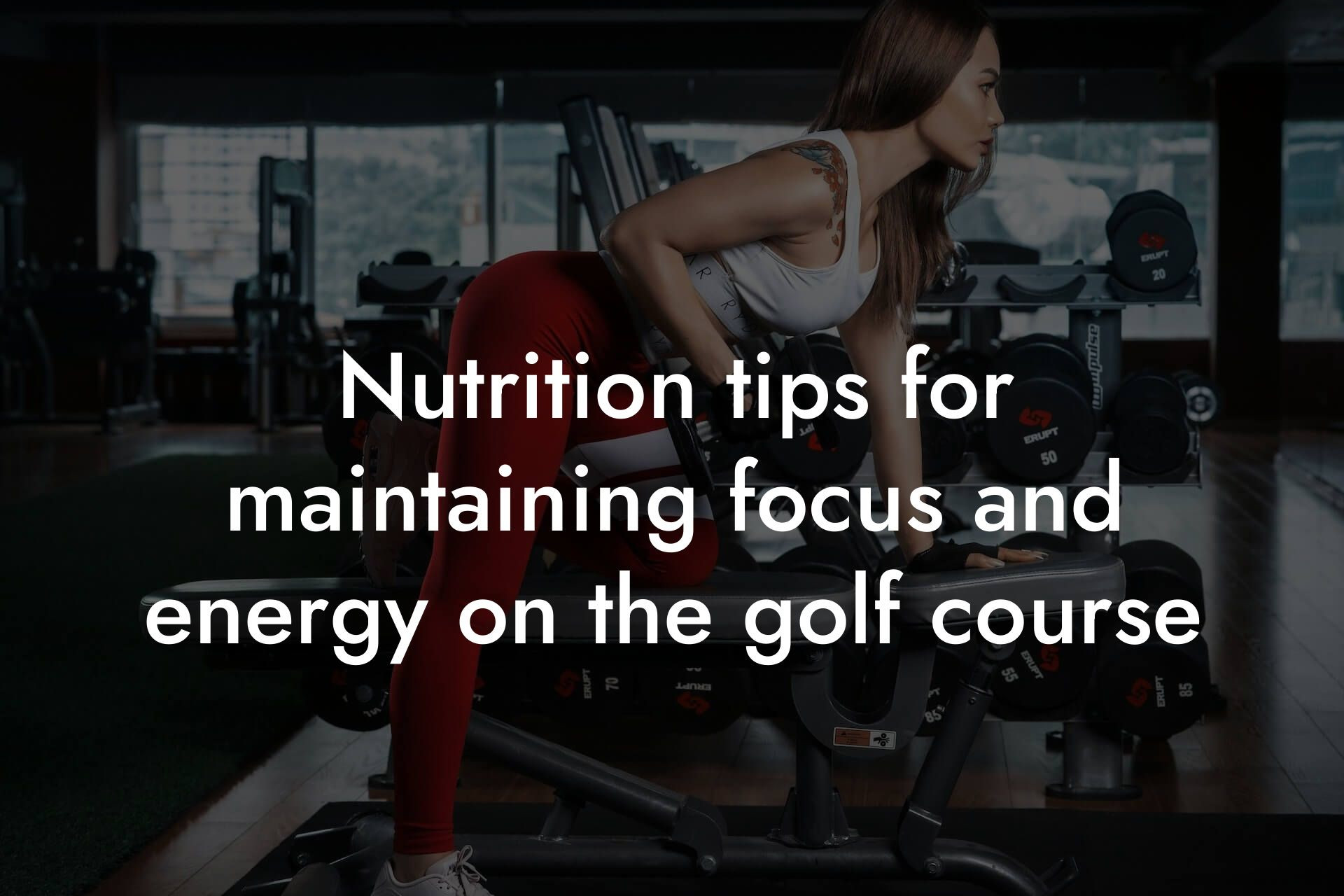As a high-earning professional, you understand the importance of precision and power in your golf game. While technique and practice are crucial, there's another factor that can significantly impact your performance: body composition. At Tano Performance Group, we've seen firsthand how a thorough understanding of body composition can help golfers optimize their swing power and accuracy. In this article, we'll delve into the relationship between body composition and golf performance, and explore how our DEXA machine can help you unlock your full potential.
Table of Contents
- What is Body Composition?
- The Impact of Body Fat on Golf Swing Power
- The Role of Muscle Mass in Golf Swing Accuracy
- The Importance of Bone Density in Golf Swing Power and Accuracy
- How DEXA Scans Can Help Optimize Body Composition for Golf
- Case Study: The Impact of Body Composition on Golf Performance
- Conclusion: The Key to Unlocking Your Full Potential
- Get Started with Tano Performance Group Today
- Frequently Asked Questions
What is Body Composition?
Body composition refers to the proportion of fat mass and lean mass in your body. Lean mass includes muscle, bone, and water, while fat mass encompasses both essential and storage fat. A healthy body composition is characterized by a high percentage of lean mass and a low percentage of body fat. In golf, a leaner body composition can provide a significant advantage, as it allows for greater power, speed, and agility.
The Impact of Body Fat on Golf Swing Power
Excess body fat can hinder golf swing power in several ways. Firstly, it increases the amount of energy required to move your body during the swing, reducing the power and speed you can generate. Secondly, excess fat around the midsection can impede your ability to rotate and generate torque, further reducing power. Finally, carrying excess fat can lead to decreased flexibility and mobility, making it more difficult to maintain a consistent swing.
The Role of Muscle Mass in Golf Swing Accuracy
Muscle mass, on the other hand, plays a critical role in golf swing accuracy. A strong core and leg muscles are essential for maintaining stability and balance throughout the swing, allowing you to maintain a consistent swing plane and hit more accurate shots. Additionally, well-developed shoulder and arm muscles enable you to generate more power and control, further enhancing accuracy.
The Importance of Bone Density in Golf Swing Power and Accuracy
Bone density is another critical aspect of body composition that affects golf performance. Stronger bones provide a more stable foundation for your muscles to generate power, allowing you to hit more powerful shots. Additionally, good bone density helps maintain proper posture and alignment, which is essential for accuracy. Weakened bones, on the other hand, can lead to decreased power and accuracy, as well as increased risk of injury.
How DEXA Scans Can Help Optimize Body Composition for Golf
At Tano Performance Group, our DEXA machine provides a comprehensive body composition analysis, including measurements of fat mass, lean mass, and bone density. This information allows us to identify areas for improvement and develop personalized training and nutrition plans tailored to your specific needs. By optimizing your body composition, you can unlock your full potential and take your golf game to the next level.
Case Study: The Impact of Body Composition on Golf Performance
We've seen numerous examples of how optimizing body composition can improve golf performance. One notable case study involved a professional golfer who came to us with concerns about his declining power and accuracy. After conducting a DEXA scan, we identified that he had a high percentage of body fat and low muscle mass in his core and legs. We developed a customized training and nutrition plan to address these imbalances, and within six months, he had reduced his body fat percentage by 10% and increased his muscle mass by 15%. The result? A significant increase in power and accuracy, leading to improved performance on the course.
Conclusion: The Key to Unlocking Your Full Potential
In conclusion, body composition plays a critical role in golf swing power and accuracy. By understanding the importance of lean mass, muscle mass, and bone density, and taking steps to optimize your body composition, you can unlock your full potential and take your golf game to new heights. At Tano Performance Group, our DEXA machine and team of experts are dedicated to helping high-earning professionals like you achieve their goals and dominate the course. Take the first step towards optimizing your body composition today and discover the difference it can make in your golf game.
Get Started with Tano Performance Group Today
Ready to unlock your full potential and take your golf game to the next level? Contact us today to schedule a DEXA scan and consultation with one of our experts. With our comprehensive body composition analysis and personalized training and nutrition plans, you'll be on your way to achieving the power, speed, and accuracy you need to dominate the course.
Frequently Asked Questions
What is the relationship between body composition and golf swing power?
Research has shown that there is a significant correlation between body composition and golf swing power. Golfers with a higher percentage of lean body mass tend to generate more power and speed in their swing, resulting in longer drives and more accurate shots. This is because lean body mass, particularly in the core and legs, provides the strength and stability needed to generate force and speed in the golf swing.
How does body fat percentage affect golf swing accuracy?
Excess body fat can negatively impact golf swing accuracy by reducing flexibility, balance, and coordination. Golfers with higher body fat percentages may struggle to maintain a consistent swing plane and tempo, leading to wayward shots and decreased accuracy. Additionally, excess body fat can also affect a golfer's ability to rotate and generate power, further compromising accuracy.
What is the ideal body composition for golfers?
The ideal body composition for golfers varies depending on individual factors such as age, sex, and playing style. However, research suggests that golfers with a body fat percentage between 10-15% for men and 15-20% for women tend to perform better in terms of power and accuracy. Additionally, a higher percentage of lean body mass, particularly in the core and legs, is also desirable for golfers.
How can I measure my body composition?
There are several ways to measure body composition, including dual-energy X-ray absorptiometry (DXA), hydrostatic weighing, and skinfold measurements. DXA is a non-invasive test that uses X-rays to measure bone density and body composition. Hydrostatic weighing involves weighing yourself underwater to estimate body fat percentage. Skinfold measurements involve pinching the skin at specific points to estimate body fat percentage. Consult with a healthcare professional or registered dietitian to determine the best method for you.
What are the benefits of having a high percentage of lean body mass for golfers?
Golfers with a high percentage of lean body mass tend to have improved power, speed, and accuracy in their swing. Lean body mass also provides improved stability and balance, reducing the risk of injury and improving overall performance. Additionally, lean body mass can also improve insulin sensitivity and reduce the risk of chronic diseases such as diabetes and heart disease.
How can I increase my lean body mass?
To increase lean body mass, focus on a combination of proper nutrition and resistance training. Eat a balanced diet that includes plenty of protein, complex carbohydrates, and healthy fats. Aim to consume 1.2-1.6 grams of protein per kilogram of body weight daily. Incorporate resistance exercises such as squats, lunges, and deadlifts into your workout routine, focusing on exercises that target multiple muscle groups at once.
What is the role of core strength in golf swing power and accuracy?
Core strength plays a critical role in golf swing power and accuracy. The core muscles, including the abdominals and obliques, provide stability and rotation in the golf swing, allowing golfers to generate more power and speed. Weak core muscles can lead to a loss of power and accuracy, as well as increased risk of injury.
How can I improve my core strength for golf?
To improve core strength for golf, focus on exercises that target the abdominals and obliques, such as planks, Russian twists, and side planks. Incorporate exercises that mimic the rotational movement of the golf swing, such as medicine ball tosses and cable rotations. Aim to perform core exercises 2-3 times per week, with 3-4 sets of 8-12 repetitions each.
What is the relationship between body fat distribution and golf swing performance?
Research has shown that body fat distribution, particularly in the midsection, can affect golf swing performance. Golfers with excess fat in the midsection may experience reduced flexibility, balance, and coordination, leading to decreased power and accuracy. Additionally, excess fat in the midsection can also increase the risk of chronic diseases such as diabetes and heart disease.
How can I reduce body fat in the midsection?
To reduce body fat in the midsection, focus on a combination of proper nutrition and exercise. Eat a balanced diet that is low in processed foods and added sugars, and high in whole grains, fruits, and vegetables. Incorporate exercises that target the core muscles, such as planks and crunches, as well as exercises that promote fat loss, such as cardio and high-intensity interval training.
What is the impact of muscle imbalances on golf swing performance?
Muscle imbalances, particularly in the shoulders, hips, and legs, can negatively impact golf swing performance. Muscle imbalances can lead to altered swing mechanics, reduced power and speed, and increased risk of injury. Golfers with muscle imbalances may experience difficulty maintaining a consistent swing plane and tempo, leading to wayward shots and decreased accuracy.
How can I identify muscle imbalances in my golf swing?
To identify muscle imbalances in your golf swing, consult with a golf instructor or fitness professional who can assess your swing mechanics and identify areas of imbalance. They may use tools such as video analysis and strength testing to identify areas of weakness and imbalance. Additionally, you can also perform self-assessments, such as checking your posture and range of motion, to identify potential areas of imbalance.
How can I correct muscle imbalances in my golf swing?
To correct muscle imbalances in your golf swing, focus on exercises that target the specific muscle groups that are weak or imbalanced. For example, if you have a weakness in your shoulder rotators, incorporate exercises such as shoulder rotations and scapular stabilizations into your workout routine. Additionally, work with a golf instructor or fitness professional to develop a customized training program that addresses your specific areas of imbalance.
What is the role of flexibility and mobility in golf swing performance?
Flexibility and mobility play a critical role in golf swing performance. Golfers with improved flexibility and mobility tend to have increased range of motion, reduced risk of injury, and improved power and accuracy. Flexibility and mobility exercises, such as stretching and foam rolling, can help improve swing mechanics and overall performance.
How can I improve my flexibility and mobility for golf?
To improve flexibility and mobility for golf, incorporate exercises that target the major muscle groups, such as the shoulders, hips, and legs. Focus on exercises that improve range of motion, such as stretching and foam rolling, as well as exercises that promote strength and stability, such as resistance band exercises and bodyweight exercises. Aim to perform flexibility and mobility exercises 2-3 times per week, with 3-4 sets of 8-12 repetitions each.
What is the impact of bone density on golf swing performance?
Bone density can affect golf swing performance, particularly in older golfers. Golfers with low bone density may experience reduced power and speed, as well as increased risk of injury. Additionally, low bone density can also affect overall health, increasing the risk of osteoporosis and fractures.
How can I improve my bone density for golf?
To improve bone density for golf, focus on exercises that promote weight-bearing and resistance training, such as squats, lunges, and deadlifts. Additionally, incorporate exercises that target the core and legs, such as planks and leg press, to improve overall strength and stability. Consult with a healthcare professional or registered dietitian to develop a customized training program that addresses your specific needs.
What is the relationship between body composition and injury risk in golf?
Research has shown that body composition can affect injury risk in golf. Golfers with excess body fat, particularly in the midsection, may experience increased risk of injury due to reduced flexibility, balance, and coordination. Additionally, golfers with low lean body mass may also experience increased risk of injury due to reduced strength and stability.
How can I reduce my risk of injury in golf?
To reduce your risk of injury in golf, focus on maintaining a healthy body composition through proper nutrition and exercise. Incorporate exercises that target the core, legs, and shoulders, such as squats, lunges, and shoulder rotations, to improve strength and stability. Additionally, work on improving your flexibility and mobility through exercises such as stretching and foam rolling. Consult with a golf instructor or fitness professional to develop a customized training program that addresses your specific needs.
What is the impact of age on body composition and golf swing performance?
Age can affect body composition and golf swing performance, particularly in older golfers. As golfers age, they may experience a decline in lean body mass, bone density, and flexibility, leading to reduced power, speed, and accuracy. Additionally, older golfers may also experience increased risk of injury due to reduced strength and stability.
How can older golfers improve their body composition and golf swing performance?
Older golfers can improve their body composition and golf swing performance through a combination of proper nutrition and exercise. Focus on exercises that target the core, legs, and shoulders, such as squats, lunges, and shoulder rotations, to improve strength and stability. Incorporate exercises that promote flexibility and mobility, such as stretching and foam rolling, to improve range of motion and reduce risk of injury. Consult with a healthcare professional or registered dietitian to develop a customized training program that addresses your specific needs.
What is the role of nutrition in body composition and golf swing performance?
Nutrition plays a critical role in body composition and golf swing performance. A balanced diet that includes plenty of protein, complex carbohydrates, and healthy fats can help support muscle growth and repair, as well as provide energy for golf. Golfers who consume a poor diet may experience reduced power, speed, and accuracy, as well as increased risk of injury.
How can I optimize my nutrition for golf?
To optimize your nutrition for golf, focus on consuming a balanced diet that includes plenty of protein, complex carbohydrates, and healthy fats. Aim to consume 1.2-1.6 grams of protein per kilogram of body weight daily, and include complex carbohydrates such as whole grains, fruits, and vegetables in your diet. Healthy fats, such as those found in nuts and avocados, can also provide energy and support overall health. Consult with a registered dietitian or healthcare professional to develop a customized nutrition plan that addresses your specific needs.
Here are some related articles you might love...
- How to manage body fat for optimal golf performance
- Strength training to improve golf performance
- Nutrition tips for maintaining focus and energy on the golf course
- The role of core strength in golf accuracy
- Bone density and injury prevention in golf
- Recovery strategies for golfers after a tournament
- Off-season fitness programs for golfers
- How DEXA scans can benefit professional golfers
- Maintaining flexibility and muscle mass for a better golf swing
Zak Faulkner
Zak Faulkner is a leading authority in the realm of physical health and body composition analysis, with over 15 years of experience helping professionals optimise their fitness and well-being. As one the experts behind Tano Performance Group, Zak has dedicated his career to providing in-depth, science-backed insights that empower clients to elevate their physical performance and overall health.
With extensive knowledge of DEXA technology, Zak specializes in delivering comprehensive body assessments that offer precise data on body fat, muscle mass, bone density, and overall physique. His expertise enables individuals to make informed decisions and achieve their fitness goals with accuracy and confidence. Zak’s approach is rooted in a deep understanding of human physiology, combined with a passion for helping clients unlock their full potential through personalised strategies.
Over the years, Zak has earned a reputation for his commitment to excellence, precision, and client-focused service. His guidance is trusted by top professionals who demand the best when it comes to their health. Whether advising on fitness programs, nutritional strategies, or long-term wellness plans, Zak Faulkner’s insights are a valuable resource for anyone serious about taking their health and fitness to the next level.
At Tano Performance Group, Zak continues to lead our Content Team revolutionising how professionals approach their physical health, offering unparalleled expertise that drives real results.




